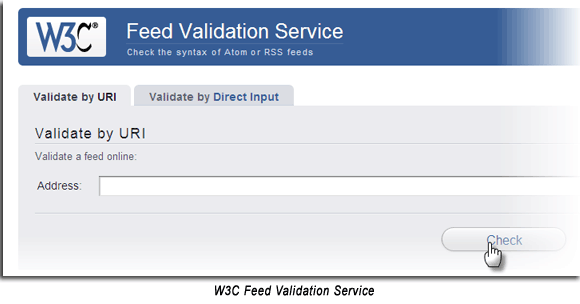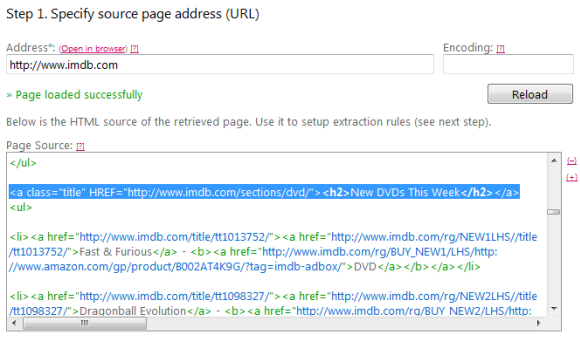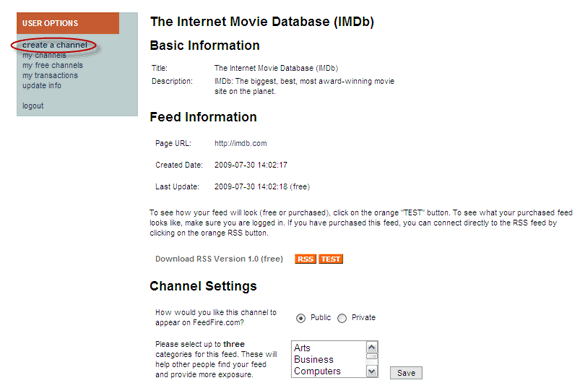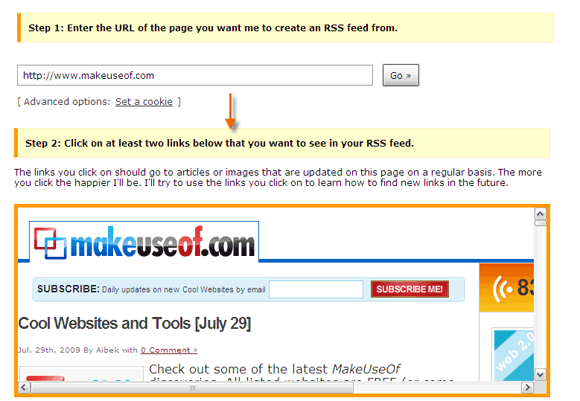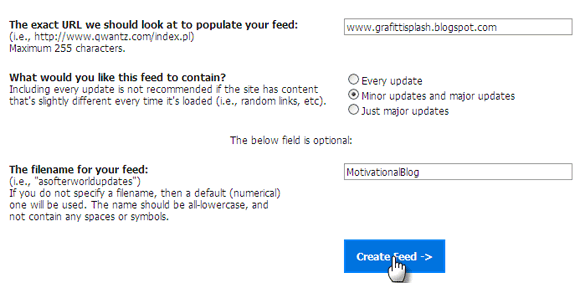Hmm"¦The Case of the Missing RSS Feed. My RSS feed reader is primed up and ready to go but there's no feed button on the site. Just when I thought that this lovely website was going to solve my information lust.
Well, we will try to solve the problem of the missing RSS link but like all good case histories here's a brief sketch about the guy who's missing - RSS or Rich Site Summary (also commonly called Really Simple Syndication).
RSS is quite simply a document which sums up an updated web page in a standardized format and delivers it to those who want it. Feed Reader or News Aggregator software does the job of grabbing the RSS Feed automatically. We just have to read it or dump it.
The benefit is lots of saved time and saved mailbox space. We don't need to hop over to each site individually or subscribe to their newsletters. But there's a lot more that we can do with RSS. All of it has to do with grabbing news and what's new on the web. My personal favorite is about movies and grabbing torrents. Raise your IM or Twitter experience. Or simply be "˜artsy fartsy.'
Every site or blog worth its salt has a feed and now it is a must-have just like an internal search bar. But then just when you start taking the little orange RSS icon for granted, there's a site missing a RSS link.
Is it just the RSS link button missing or is it the entire RSS XML code? Cast your eye over the homepage. RSS icons are located not only near the top but also near the very bottom of the page. For example, Reuters has its itsy bitsy RSS icon at the very south.
If you can't locate the RSS icon - Use the Common Feed Icon
The first task is to just look up towards the browser's address bar. See the little orange icon which says "˜subscribe to this page' on a mouseover? That's the common feed icon, a feature of IE , Opera, Firefox and some other browsers these days. Google Chrome still does not have it though. When a browser opens a website on the homepage, it automatically searches for the site's RSS feed using a specification called RSS Autodiscovery.
RSS Autodiscovery is just a simple line of code included in the web code which tells the browser (and feed readers) - there's a feed and you can subscribe to it. You can click on the icon and the browser's feed reader or your own picks up the feed from the page.
If you got it but it isn't working - check with a RSS Validator
RSS just like any other code - it has to follow certain rules and syntax. Errors generally follow when the rules are broken. A RSS Feed Validator checks a feed for problems.
You can pass the feed URL through a RSS Validator service and check whether the error is with the code or if it's failing in the RSS Reader. Copy the RSS link and paste it into any of the free online RSS Feed Validators such as "“
If you don't have both - generate RSS feeds dynamically
There are several online tools that tackle the dilemma of a website or blog without a RSS link. All these web services create a feed "on the fly" and delivers the content to you in your feed reader. The technical method is called "˜HTML Scrapping' and it lets these services build a RSS feed from a site which does not have one. Using these tools you can catch feed lacking sites as they change content.
Here are a few :
Feed43
With Feed43, it's basically a three step process. Starting with the URL of the webpage, you have to define "˜search patterns' (i.e. which content is good and which is not). This allows the tool to extract the information (i.e. snippets of text or HTML) and build the feed.
Finally, specify the output template (i.e. the look of the feed) and pick up the generated feed with your feed reader. Setting up a search pattern and defining the template might put off the average user (there is a step-by-step guide). So the power of this site might only appeal to the expert user.
The site requires a free registration and email verification.
FeedYes
Works simply. Just put in a URL of the homepage or a sub-page and create your feed. A few steps lets you filter out undesirable links after FeedYes does its own cleanup job. In this way you can obtain the specific section you are interested in.
To save your feeds, the site requires a login.
FeedFire
Registration is a must but it's simple and quick. The RSS feed is generated in a jiffy. The free account though does not filter all the links it finds. The paid subscription gives the more advanced options.
PonyFish
The odd name apart, the web service generates a feed in five steps from any URL. You can choose links within the site to get updates only from those selected sections. Though signing up is not compulsory, it helps to release more features like storing the feed, tweaking it and getting more updates (once every four hours).
RSSPECT
Allows you to create feeds for any website or document. The free account allows for four feeds per account. Other features let you create personalized feeds for your own website and your podcasts. All feeds are free and without advertisements.
We have earlier covered three other great RSS online services at MakeUseOf.com. All three are flexible tools for creating tracking websites on the fly -
- Feedity
- Page2RSS
Also read Aibek's post on How to Monitor Websites That Don't Have RSS Feeds.
To save us all the trouble, a good webmaster can simply code in a RSS link. But till the day all webmasters are created equal, we have these workarounds to help out. Let us know your take on this.
Image Credit: Chesi - Fotos CC



